King Harvest Dancing in the Moonlight Review Critic
I was supposed to be at a concert this weekend, i that I was really looking forward to — a triple beak featuring Pure Prairie League, Poco and Orleans.
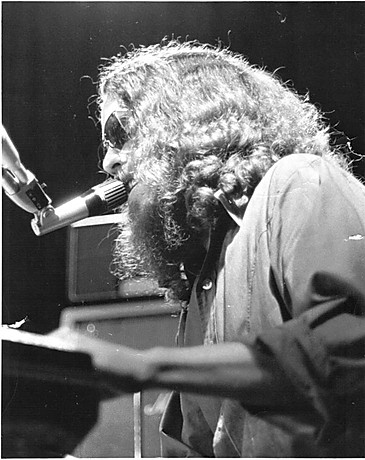
(Photo courtesy of Sherman Kelly)
But that didn't happen because of the COVID-19 pandemic. In fact, there's yet a question here in early May 2020 if we'll get dorsum to having any concerts at all this year.
Nevertheless, in the weeks leading up to this show, I had been watching YouTube videos of all three bands, particularly the Orleans cover of the groovy King Harvest song, "Dancing in the Moonlight."
That song, written past Sherman Kelly, has always been one of my favorite tunes from the 1970s. Released on July 9, 1972, it became a big hit for King Harvest, reaching No. 10 on the Cash Box Meridian 100 singles chart, No 13 on the Billboard Hot 100 singles chart and No. 22 on the Billboard Easy Listening chart.
Normally, I often read the comments on those YouTube videos, and I noticed on one Orleans video of "Dancing in the Moonlight," there was a annotate by Sherman Kelly from nearly five months agone.
Look. What?
Since I love the stories behind the writing and making of songs and albums — the very foundation on which The Vinyl Dialogues book series is based — my first idea was, "Can I detect Sherman Kelly and ask him if he'd consent to an interview to share the story backside "Dancing in the Moonlight?"
Well, I did. And he would. And you lot're non gonna believe the story.
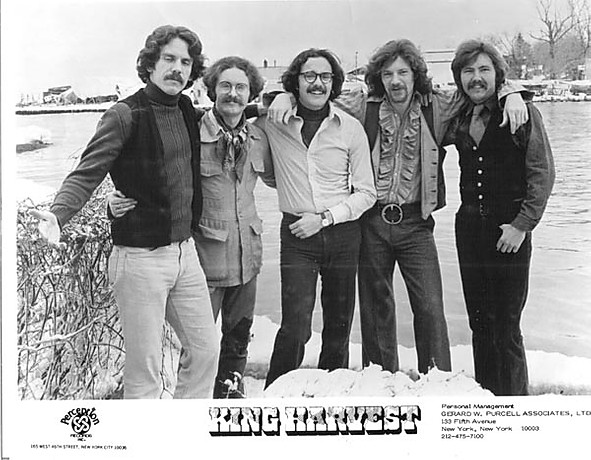
(Photo courtesy of Sherman Kelly)
Kelly and some friends were running a nightclub in St. Thomas, Virgin Islands, in 1969. 1 day, they decided to rent a 65-foot yacht and travel to St. Croix for the day. Unbeknownst to him at the time, Kelly was decumbent to seasickness, and he and his girlfriend got really seasick on the crossing.
When the group arrived in St. Croix, those onboard took a dingy to shore to await for some dinner. Simply Kelly and his girlfriend were both nonetheless sick and weren't interested in eating at that point.
The group got its food and decided to head back to the boat to spend the nighttime. Kelly and his girlfriend looked out into the harbor and saw the boat'southward mast swaying back and forth, and instead opted to stay in town overnight rather than gamble more seasickness on the boat.
There was simply ane problem: Due to his extreme seasickness and disorientation, Kelly had left his wallet on the boat and had no coin or credit cards for a hotel. The ii went to a small inn, explained the state of affairs to the innkeeper and offered to settle up in the morning when Kelly could render to the gunkhole to remember his wallet.
"And he said, 'Sure, you tin can stay here if your girlfriend volition slumber with me,'" said Kelly in a telephone interview from his home in the Finger Lakes region of New York.
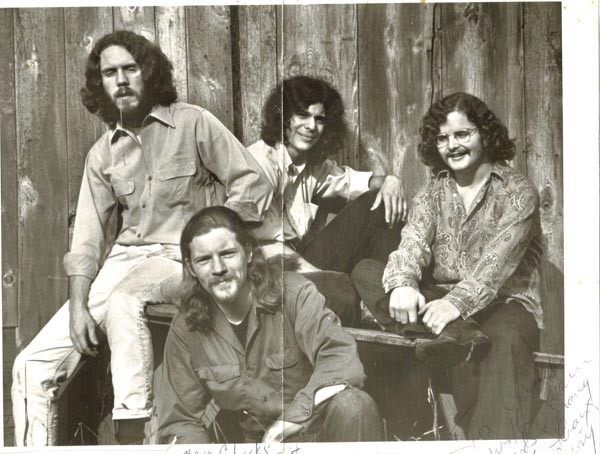
(Photo courtesy of Sherman Kelly)
Later being turned down at a second inn, Kelly's girlfriend said, "It's a beautiful dark. Why don't nosotros merely stretch out on the beach?"
"So we did," said Kelly. "And that'southward all I remember very clearly."
What happened later on that was pieced together through bits of Kelly's own memory and the recollections of other people. Co-ordinate to those accounts, while sleeping on the beach, Kelly and his girlfriend were the victims of a vicious St. Croix street gang. Kelly was severely beaten by five gang members wielding baseball bats. His girlfriend was raped by the gang leader and the rest were in line. Only Kelly'due south girlfriend later reported, that Kelly regained consciousness during the set on and fought back, making enough noise to scare off the attackers.
With Kelly drifting in and out of consciousness, the ii managed to follow the lights along the shore, eventually making their way to the merely St. Croix hospital. Kelly and his girlfriend were thought to be among the first victims of the notorious Fountain Valley Gang, who in 1972 murdered 8 tourists and wounded eight more thereby devastating St. Croix tourism for many years.
"I woke upwardly to the sound of my hospital roommate screaming in pain. Finally the screaming stopped and I heard two doctors talking about him. 'That's it, he'southward gone,' said i doc about the other patient. 'What nearly him, y'all think he'southward gonna arrive?' And the other doctor said, 'No, I incertitude it." I realized they were talking about me," said Kelly.
Kelly did make it, though. He spent several days in the St. Croix infirmary, somewhen returning to St. Thomas, where he stayed at a friend's house while he recovered. Eventually he was good for you enough to become back to New York, where doctors at New York Hospital were able to re-break and re-set the bones in his face and address his other injuries.
Returning to his home in Ithaca, New York, still in pain and with abiding headaches, Kelly was in no shape to be in a band. But that didn't foreclose him from writing songs.
And it was during this period of convalescence that he began to write some verses for a vocal, verses that would subsequently become the lyrics for "Dancing in the Moonlight."
"I envisioned an alternate reality, the dream of a peaceful and joyous celebration of life. It was just me imagining a better world than the one I had just experienced in St. Croix," said Kelly.
An unspeakably traumatic experience that almost cost him his life had turned into a beautiful vocal.
"It was amazing. People liked the vocal correct from the start. I liked it, simply I wouldn't have predicted that it would become a large hit," said Kelly.
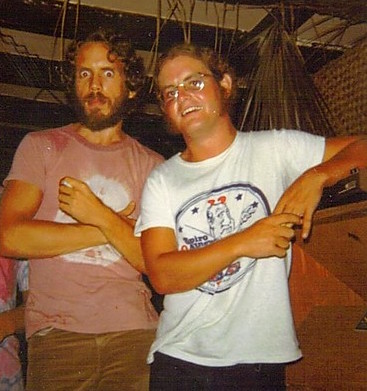
(Photograph courtesy of Sherman Kelly)
King Harvest wouldn't be the start to record the song, though. In 1970, Kelly joined a ring called Boffalongo, with his blood brother, Wells Kelly, guitarist Larry Hoppen, bassist and keyboardist Dave "Doc" Robinson and Peter Giansante. "Dancing in the Moonlight" would appear on the 1970 Boffalongo album "Across Your Caput," with Sherman Kelly on atomic number 82 vocals, Wells Kelly on drums and Larry Hoppen on lead guitar.
His song on that version of the song is horrible, co-ordinate to Kelly.
"The showtime time I was in a recording studio for that version, nosotros had these producers who thought information technology was a skillful thought to give me cocaine. That was probably the worst idea," said Kelly. "I institute myself in the vocal booth, where in that location were a lot of people distracting me. And the producers would give me more cocaine to go along me doing takes until my voice was so distorted and then weird."
Just that version was popular, and Boffalongo had a regional striking with it. The song was also recorded by a group called High Broom and also released in 1970 on Island Records, but failed to achieve the charts.
When Boffalongo broke upwards, Wells Kelly joined the then Paris-based French-American group King Harvest, whose lead vocalist was Medico Robinson, also formerly of Boffalongo. It was Wells Kelly who introduced "Dancing in the Moonlight" to the band.
The King Harvest version of "Dancing in the Moonlight" features Robinson on lead vocals. Information technology was released every bit a single, with "Lady Come Dwelling house" on the B-side.
Once the song became a hitting, Male monarch Harvest invited Sherman Kelly to tour with the band in the summer of 1972. During live shows, Robinson handled the lead vocals on the song and Sherman Kelly provided harmony.
"Doc had a pretty good voice, better than mine," said Kelly. "I remember one critic said most me, 'Every bit a singer, Sherman Kelly is not too bad of a songwriter.' That was amusing, and true."
Just life on the road with King Harvest wasn't for Kelly. He lasted simply that one bout with the band.
"Imagine yourself in your twenties and you've written a hit song, yous have some chart activity and you're traveling around. It was fun for a while," he said. "Just life on the road is ridiculous. I didn't really intendance for information technology after awhile."
Wells Kelly would eventually leave Rex Harvest and reconnect with John Hall. Wells Kelly, Hall and Harvey Brooks had been in a band chosen Thunderfrog in the belatedly 1960s. Forth with Larry Hoppen from Boffalongo, Wells Kelly and Hall formed the band Orleans, which would also record its version of "Dancing in the Moonlight." The current incarnation of Orleans, which even so includes Hall, and Larry Hoppen'southward brothers, Lance and Lane Hoppen, still has "Dancing in the Moonlight" in its set up. Larry Hoppen died in 2012.
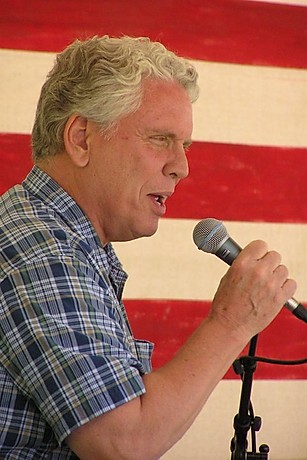
(Photo courtesy of Sherman Kelly)
As for Sherman Kelly, he graduated from Cornell University in 1967 with a available'south degree in psychology and English language. He went on to report at Alliance Francaise in Paris, the University of Lausanne in Switzerland and the New Schoolhouse for Social Research in New York Urban center, all before writing "Dancing in the Moonlight."
Subsequently the tragic death of his brother Wells Kelly in 1984 — who died on the front pace of a London apartment after a night of partying while a member of Meat Loaf's band — Sherman Kelly plant it too painful to work in music and pursued other interests, including getting his chief's degree in social work and psychotherapy from Syracuse University in New York. For many years, until his retirement, he worked as a psychotherapist.
In 2008, he released an album chosen "Burnin' the Candle," which included some unfinished work that he and Wells Kelly had written together.
In 2000, Toploader covered "Dancing in the Moonlight," which became a striking for the band. The song has been featured in various films and on television shows. In 2017, "Dancing in the Moonlight" was featured in the video game "Guardians of the Galaxy: The Telltale Signs" and serves as the opening song for the 2d episode.
Source: https://vinyldialogues.com/VinylDialoguesBlog/the-traumatic-experience-that-inspired-the-hit-dancing-in-the-moonlight/
0 Response to "King Harvest Dancing in the Moonlight Review Critic"
Post a Comment